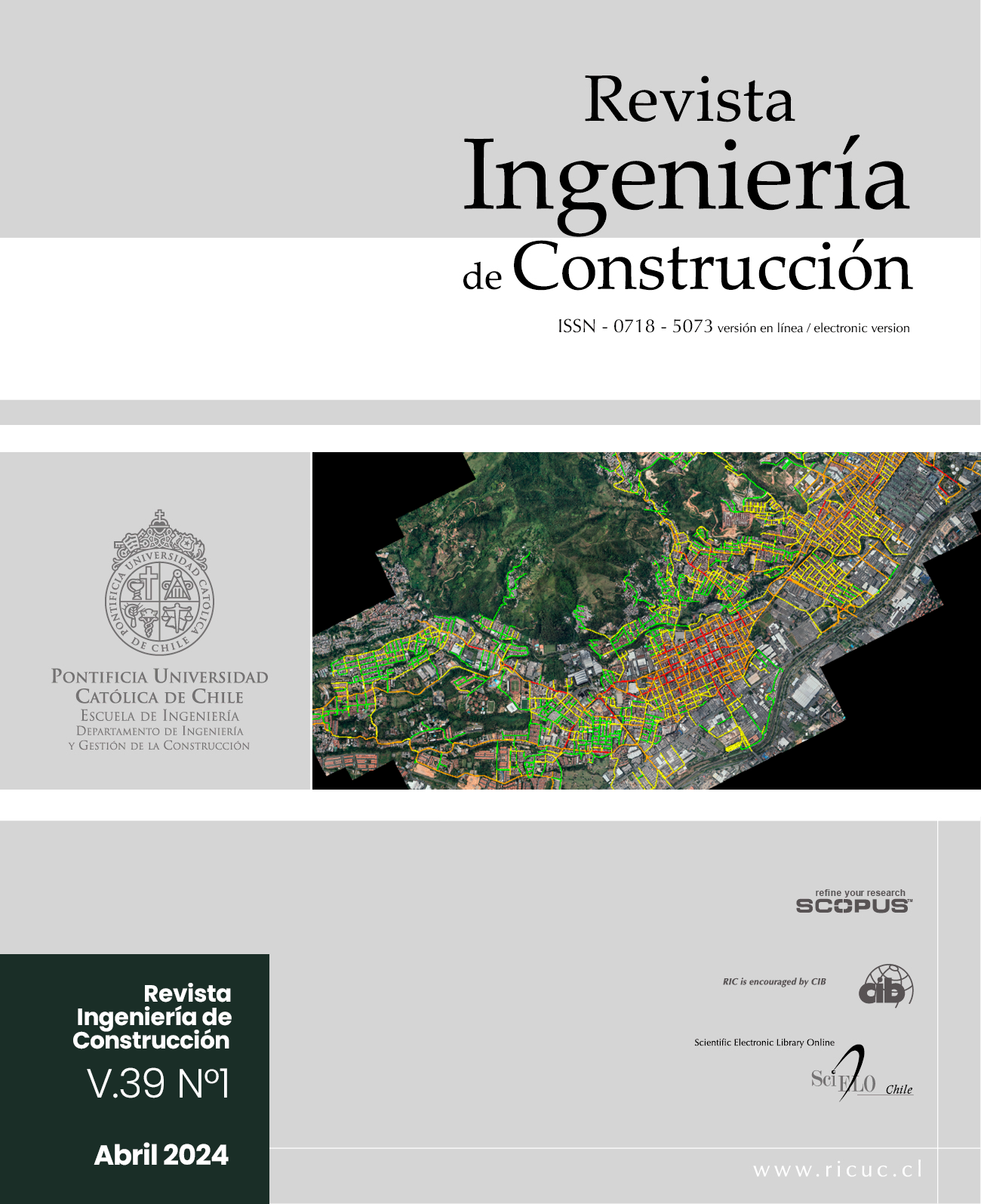Fatigue vulnerability assessment of a steel arch bridge using the probabilistic weibull model and considering its remaining service life under localized corrosion effects
DOI:
https://doi.org/10.7764/RIC.00097.21Keywords:
Fatigue, steel bridges, corrosion effects, cumulative fatigue failure, calibration, progressive collapseAbstract
This study attempts to obtain the approximate fatigue vulnerability of a steel arch bridge from the Colombian national road network. It establishes the interaction between the demand and the available capacity through the Weibull probability equation, and an AASHTO remaining-time equation indicated in (FHWA, 2015). However, the available capacity in terms of the S-N curve obtained from available international references was modified to account for the effects of corrosion present in elements and/or joints in the bridge. The load demand was modeled as the controlled action of the fatigue truck reported in AASHTO, which was systematically located on a structural model represented by Shell and Frame type finite elements, which represented the information available in drawings (in the current Colombian bridge management system), and the one obtained from structural survey activities. The structural model was further calibrated by a parametric study on the modulus of elasticity of steel, which included the minimization of the error difference in the vertical deflections of a bridge load test, keeping the magnitude within the expected ranges established in a protocol. Such reports of actual deflections were achieved using distance meters at important points of the bridge. This model allowed for estimating the magnitude of stresses in the structural elements of the bridge, especially in an area of interest for the study where chemical and physical elements of structural deficiency were determined. The results show an inverse relationship between the probability of failure and remaining service life. The effect of corrosion on the remaining capacity and the probability of failure of the structural elements is clear.
Downloads
Downloads
Published
How to Cite
Issue
Section
License
Copyright (c) 2024 Federico Alejandro Nuñez-Moreno, Luisa Fernanda Lozano Acosta, Maria Camila Silva Fajardo, Edgar Eduardo Muñoz Diaz, Indira Campo Neira

This work is licensed under a Creative Commons Attribution 4.0 International License.

